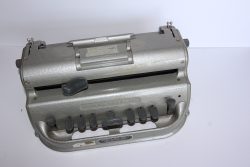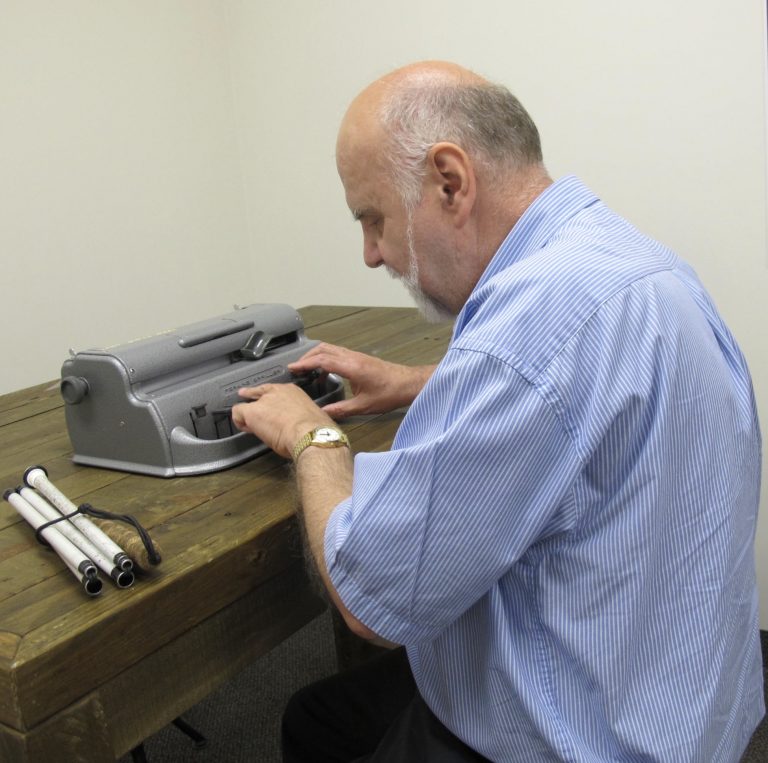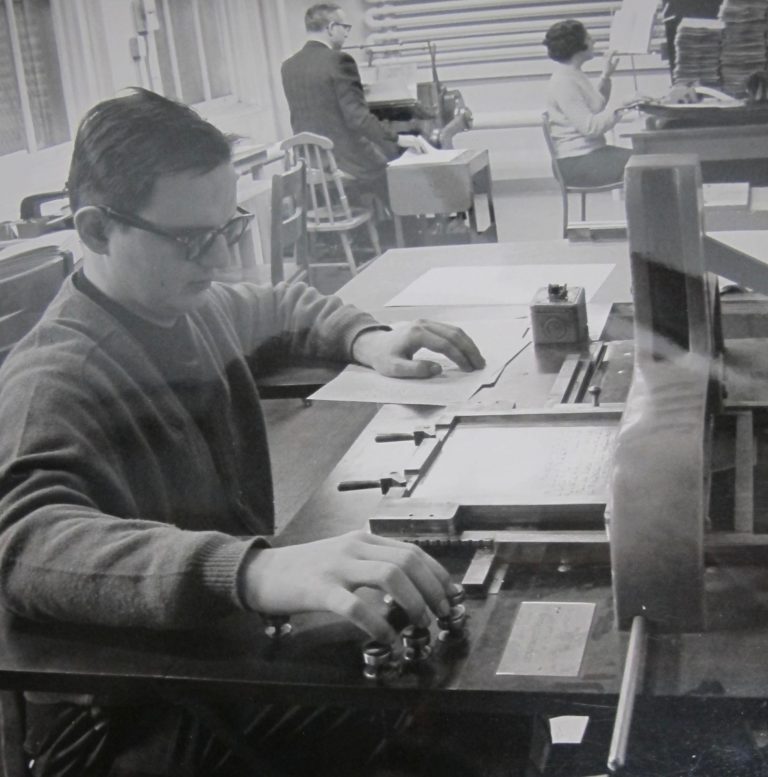Braille
Despite braille winning the “War of the Dots” and becoming the standard system for embossed printing early in the 20th century, it still wasn’t a single, unified code. Competing and conflicting braille systems were in use. Experts recognized that these differences had to be resolved if braille printing and education was to happen on a large scale. Also, braille needed to adapt to the times. Codes needed to be revised so that braille users could have access to information within any domain they required, including math and science and music. A CNIB document called “Braille Today ” noted "Modern technology has made it possible for blind people to manipulate successfully highly sophisticated equipment. Since this is so, blind people wish to have ready access to the new information, and since the information is available, and people want it, the hundreds of volunteer braillists in Canada and the United States want to find a way to provide it. This can only be done by the development of new symbols and new means of presenting information in Braille." Underlying this sentiment is the belief that access to information is a right.
While experts, including Sherman Swift’s successor as CNIB’s Chief Librarian, R.W. Beath, worked on developing and simplifying braille rules and code, new technology was to make the writing and reading of braille easier. In 1952 Beath invited CNIB staff to a demonstration of an experimental IBM braille reader that recorded braille on a tape instead of a page. He cautioned that it was simply an experiment, "not as yet of proven value." But he found it to be “a remarkably ingenious piece of equipment."
Also on the horizon: the automation of text into braille, or braille translation. A demonstration in Toronto of the new technology noted “the procedure creates in minutes a raised braille printing plate suitable for the production of books… (it) is expected to be put to work immediately to make up for the serious shortage of qualified braille translators, whose training normally takes two years.” A 1959 "New York Herald Tribune" article in the CNIB archives, titled “Computer Translates English into Braille,” reported on another demonstration of the new technology: "An electronic brain as big as a basketball court translated English yesterday into bumpy braille code for the blind…" The handwritten note attached, directed to CNIB Director Col. Baker, reads: “the Machine Age is here…”
Braille transcription
Braille transcription required specialized training. The Braille Transcription service began officially in 1963, though classes for volunteer braillists began a few years earlier. A 1961 newspaper article about the 75 volunteers of the CNIB Braille Transcription service described the “urgent need” for at least 25 more volunteers. The work of the group involved transcribing into braille whole books, including high school and university texts, brailling the work of Canadian authors, and transcribing works in French, Spanish and Latin. A five-month training course meant a commitment for a volunteer of 90 minutes a week, plus five to six hours a week of homework.
Music
Louis Braille, who invented the braille dot system, was a musician himself, and he developed braille music code in the early 1830s. Many people with visual impairments were involved with music for professional or recreational purposes so music has always been part of the activities and holdings of the CNIB Library. Some of these included the following:
- National Braille Music Transcription Service. CNIB hosted this from 1955, and moved it from Montreal to Toronto in 1982.
- A Music Committee Secretary, appointed in 1942, who had the job of establishing standards for a piano tuner’s certificate, and creating “interest across Canada in the efforts and achievements of blind music teachers and musicians.”
- CNIB Music Service Consultant to counsel and assist students. The service also held national music conferences, and produced a music magazine, launched in 1970, called “Mouthpiece.”
Braille music transcription is a highly skilled activity, requiring significant training both in braille and in music theory and performance. Reading braille music presents its own challenges: it can be arranged on the page in a variety of formats, and as a 1996 article about the music library points out, "while a sighted musician can absorb many pieces of musical information from a single glance at a page of music, the blind musician requires every detail from that print page to be transcribed into braille music notation. The music must then be memorized, note by note, bar by bar, before the technical and musical problems of a composition can even begin to be studied."






